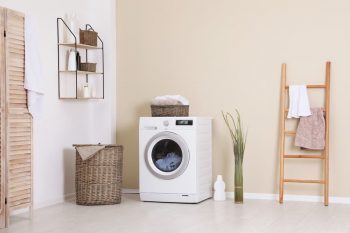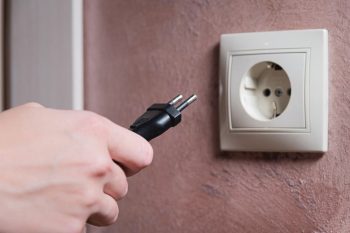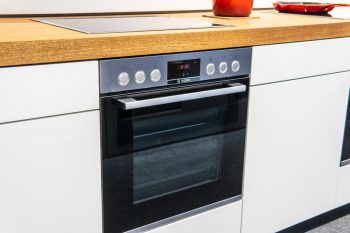
In today’s digital age, clear and crisp audio is crucial for a successful podcast, video, or music production. One common issue that creators often face is the persistent background noise of an air conditioner in their recordings. This article will guide you on how to remove air conditioner noise from audio with comprehensive steps, examples, and tools to use.
To remove air conditioner noise from audio, first try preventive measures like choosing a quiet location, using directional microphones, and soundproofing your recording space. If the noise persists, use audio editing software like Audacity, Adobe Audition, or iZotope RX in post-production. Isolate the noise in the recording, capture the noise profile, apply noise reduction, and fine-tune the settings for the best results. There are also several tools and software like Krisp, Media.io Online AI Noise Reducer, and NoiseGator that can help filter out air conditioner noise.
Why is Air Conditioner Noise a Problem?
Air conditioner noise can negatively affect the overall quality of an audio recording. It introduces unwanted background noise, which can distract the listener and make it challenging to understand the intended content. The noise from air conditioning units can vary in pitch and volume, making it difficult to remove or reduce during post-production without affecting the quality of the intended audio.
Common Causes of Air Conditioner Noise in Audio Recordings
The operation of the air conditioner can produce a low-frequency rumble that can be picked up by microphones during recording sessions. Vibrations from the air conditioner can travel through the floor or walls and be picked up by the microphone or its stand. Additionally, the operation of the air conditioner’s compressor, fans, and other components can generate mechanical noise that can be captured in recordings.
Preventive Measures to Minimize Air Conditioner Noise
Here are some preventive measures you can take to avoid picking up air conditioner noise while recording:
- Choose a quiet location: Record in a room that is away from windows, doors, and vents, and as far as possible from the air conditioning unit.
- Turn off the air conditioner: If possible, turn off the air conditioner while recording to eliminate the noise source.
- Use directional microphones: These microphones can help focus on the sound source and reduce the pickup of background noise.
- Install a sound blanket: Installing a sound blanket around the air conditioner can act as a noise barrier and help reduce the noise from the unit.
- Acoustic treatment: Apply soundproofing techniques like soundproofing panels, acoustic foam, and other sound-absorbing materials to your recording space to achieve long-term noise control.
Removing Air Conditioner Noise in Post-Production
If the preventive measures don’t completely eliminate the noise, you can use post-production techniques to reduce air conditioner noise. Here are some steps:
- Choose the right software: Use audio editing software like Audacity, Adobe Audition, or iZotope RX to remove unwanted noise from your audio.
- Isolate the noise: Select a segment of the audio containing only the ambient noise (air conditioner noise) without any voice or other sounds.
- Capture the noise profile: Use the noise reduction feature in your software to capture the noise profile. This helps the software understand the characteristics of the noise you want to remove.
- Apply noise reduction: Highlight the entire audio or the parts where you want to remove the background noise. Adjust the noise reduction settings, such as reduction amount, sensitivity, and frequency smoothing, to achieve the desired result.
- Preview and fine-tune: Listen to the processed audio and make any necessary adjustments to the noise reduction settings.
Tools and Software for Noise Reduction
There are several tools and software available to help filter out air conditioner noise from audio recordings. Some popular options include:
- iZotope RX: iZotope RX is a powerful audio repair and noise reduction software that can effectively remove air conditioner noise.
- Krisp: Krisp is a noise-canceling software that can remove unwanted noise, such as air conditioner noise, in real-time during calls.
- Media.io Online AI Noise Reducer: This online tool can remove unwanted background noise from audio and video files using AI-powered noise reduction algorithms.
- NoiseGator: NoiseGator is a lightweight noise gate application for Windows that filters out background noise and microphone hiss on VoIPs like Skype.
- Adobe Audition: Adobe Audition offers noise reduction and restoration effects that can help remove background noise, such as air conditioner noise, from audio files.
In conclusion, while air conditioner noise can be a nuisance in audio recordings, there are various methods and tools available to minimize its impact. From preventive measures during recording to noise reduction techniques in post-production, you can ensure your audio remains clear and professional.
Frequently Asked Questions
Can I use noise-cancelling headphones to eliminate air conditioner noise during recording?
No, noise-cancelling headphones help the listener to block out background noise, but they do not prevent the microphone from picking up the noise during recording. They are more suited for providing a better listening experience rather than improving the recording quality.
Are there any specific settings to use in noise reduction software to remove air conditioner noise?
The settings for noise reduction depend on the specific audio editing software you are using and the characteristics of the noise. However, the general process involves isolating a segment of the noise, capturing the noise profile, and applying noise reduction. You should adjust the settings as per your needs and preview the audio to ensure the desired result.
What’s the difference between a directional microphone and a regular microphone?
A directional microphone, also known as a unidirectional microphone, picks up sound predominantly from one direction. This feature helps to focus on the desired sound source and reduce the pickup of unwanted background noise. On the other hand, regular microphones, often omnidirectional, pick up sound equally from all directions and are more likely to capture background noise.
Is it necessary to use software to remove air conditioner noise from audio?
While preventive measures can significantly reduce air conditioner noise, using software can further refine the audio by removing any remaining noise in post-production. It’s not always necessary, but it can help ensure the highest quality audio.
Is soundproofing a room expensive?
The cost of soundproofing a room can vary widely depending on the methods and materials used. Simple solutions like using soundproofing panels or acoustic foam can be relatively inexpensive, while more comprehensive solutions like building a room within a room can be quite costly. It’s best to evaluate your needs and budget before deciding on the best approach.












